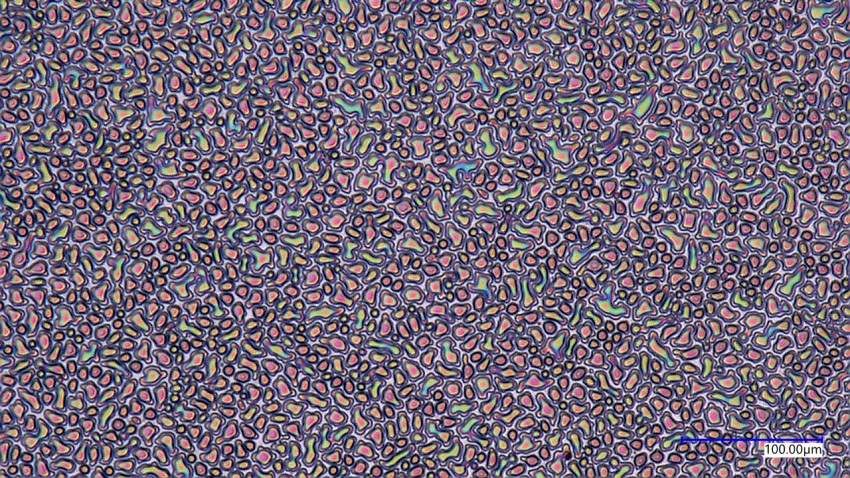Biography
After an undergraduate degree in Music and a brief career as a professional musician and music teacher, Shefford P. Baker studied Mechanical Engineering and Materials Science. He received his PhD in Materials Science and Engineering at Stanford University in 1993, was a staff scientist at the Max-Planck-Institut für Metallforschung in Stuttgart from 1993 to 1997 and joined the Cornell faculty in 1998. He was Visiting Professor at the Faculté des Sciences et Techniques de Saint Jérome, Université Paul Cézanne, Marseille, in summer 2006. Baker has received several teaching awards at Cornell.
Research Interests
Baker’s research focuses on the unique mechanical properties of materials having microstructural or dimensional length scales in the nanometer regime. Work in the group can be divided into two broad areas.
Thin Films and Nanopatterned Structures are the basic building blocks of micro- and nano-fabricated devices, but may have mechanical properties that are very different from those of the same materials in bulk form. We want to understand (and utilize) these unique properties. We produce films with good control of interface chemistry and composition using high- and ultra-high vacuum physical vapor deposition techniques; characterize their microstructures using electron backscattered diffraction, transmission electron microscopy, and many other methods; and study their thermomechanical behavior using substrate curvature, x-ray diffraction, and others. We model the microstructure and stress states in detail in order to understand processing-structure-properties relationships. Recent achievements include discovery of a new microstructure in Ta thin films and characterization of the phase transformation that produces it, x-ray studies of stress states and relaxation in different texture components in thin metal films, dislocation dynamics simulations and analytical modeling of dislocation structures in thin layers, and quantitative measurements of bonding at interfaces by time-dependent delamination experiments.
Nanocontact Measurements are a powerful method for interrogating mechanical behavior on an extremely fine scale. Recently, with a team of collaborators, we have been using these methods to investigate structure-property relationships in the lamellar and interlamellar regions in trabecular bone as a function of age and vitamin D deficiency.
Research Projects
* Stresses and Deformation Mechanisms in Thin Metal Films: Combining Modeling with Experiments. In this NSF-funded project, we are studying how the evolution of grain and dislocation structures affects stress states, strength and strain hardening in thin metal films. We use discrete dislocation dynamics to study dislocation structures and compare the results with experimental measurements of microstructure and stresses.
*Microstructure and Mechanical Behavior of Tantalum Thin Films: Ta is an amazingly versatile and useful material in micro- and nano-fabricated devices. In this NSF-funded project, we are analyzing the long-range orientation gradients and discontinuous grain boundary structure in a new microstructure that we discovered in phase-transformed Ta thin films using experimental and computational methods.
*Stresses and Deformation in Different Texture Components in Thin Films: Thin films often form with more than one group of preferred crystallographic orientations, or textures. Since most materials are highly anisotropic at the nanoscale, these differently-oriented components have very different properties. With support from Applied Materials Corp. we study how these texture components behave in-situ using x-ray diffraction at the Cornell High Energy Synchrotron Source.
*A Materials Research Approach to Bone: Nanometer Scale Microstructure and Mechanical Properties: Bone is a complex composite material with structure and organization at many length scales. In this NSF-funded project, we are using nanoindentation to understand the structure-properties in the constituents on the micrometer length scale and their dependence on species, age, and nutrition.
Teaching Interests
Baker teaches courses that focus on the mechanical properties of materials, thin films, microstructure of materials, and metallurgy.
Service Interests
Baker is interested in undergraduate engineering education and served as the Director of Undergraduate Studies for the Department of Materials Science and Engineering from 2004 through 2010. He also chaired the College of Engineering Curriculum Task Force that examined the Engineering Common Curriculum in 2006. Baker is very active in the Materials Research Society, an international professional society of about 16,000 members. He was the President of that organization in 2009 and has served as Symposium Organizer, Meeting Chair, Committee Chair, and was a member of the Board of Directors for several years. He helped to form the Nanoscale Informal Science Education (NISE) network and has participated in a wide range of science and materials education related projects.
Selected Publications
- Kim, Y Y., J D. Carloni, B. Demarchi, D. Sparks, D. Reid, M E. Kunitake, C C. Tang, M J. Duer, C L. Freeman, B. Pokroy, K. Penkman, J. Harding, Lara A. Estroff, S P. Baker, F C Meldrum. 2016."Tuning Hardness in Calcite by Incorporation of Amino Acids." Nature Materials.
- Burket, Jayme C., Daniel J. Brooks, Jennifer M. MacLeay, Shefford P. Baker, Adele L. Boskey, Marjolein van der Meulen. 2013."Spatial variation in tissue composition and nanomechanical properties within trabeculae in an ovine model of osteoporosis and treatment."Bone52(1): 326-336.
- Kim, Grace, Adele L. Boskey, Shefford P. Baker, Marjolein van der Meulen. 2012."Improved prediction of rat cortical bone mechanical behavior using composite beam theory to integrate tissue level properties." Journal of biomechanics45: 2784-2790.
- Vodnick, Aaron M., Shefford P. Baker. 2011."Strain Transfer and Inhomogeneous Deformation in Passivated Thin Films with Mixed Texture." Acta Materialia59(14): 5681-5691.
- Fertig, Ray S., Shefford P. Baker. 2011."Threading dislocation interactions in an inhomogeneous stress field: a statistical model."Scripta Materialia65(5): 384-387.
Selected Awards and Honors
- Sonny Yau '72 Excellence in Teaching Award(Cornell University College of Engineering)2002
- Outstanding Educator, Mentor to Merrill Presidential Scholar Deborah Schorr(Cornell University)2000
- Robert '55 and Vanne '57 Cowie Excellence in Teaching Award(Cornell University College of Engineering)1999
- CAREER Award(National Science Foundation)1999
- Outstanding Paper Award, for the paper "On the Question of Strain Rate Continuity in Stress Rate Change Experiments" by C.-M. Kuo, K.R. Forbes, S.P. Baker, and W.D. Nix(Scripta Metallurgica and Materialia)1990
Education
- BM(Music),University of New Mexico,1982
- MS(Materials Engineering),Stanford University,1988
- Ph D(Materials Engineering),Stanford University,1993



